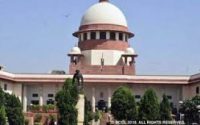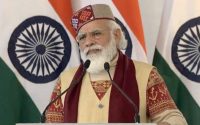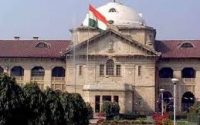$100 Website Offer
Get your personal website + domain for just $100.
Limited Time Offer!
Claim Your Website Now‘Lord Ram’s birthplace is entire 2.77 acres area’
Source: asianage.com
New Delhi: The deity of Ram Lalla on Thursday told the Supreme Court that the birthplace of Lord Rama was not limited to the Janma Asthana — the inner courtyard of the disputed site — only but includes the entire 2.77 acres of disputed area which worshipers believe to be the place of birth.
Janma Asthana can also mean the area other than the place of birth of Lord Rama as this is an area in which every body has a faith that Lord Rama was born there, senior counsel K. Parasaran told the five judge constitution bench headed by Chief Justice Ranjan Gogoi.
“Janma Asthana need not be the exact spot but can also mean the surrounding areas” comprising inner courtyard and outer courtyard, Mr Parasaran told the constitution bench also comprising Justice S.A. Bobde, Justice D.Y. Chandrachud, Justice Ashok Bhushan and Justice S. Abdul Nazeer.
While the inner courtyard including sanctum sanctorum where the idols of Lord Rama, Sita and Lakshmana’s idols, the outer courtyard consists of Sita Rasoi, Ram Chabutra and Bhandar Girah.
The deity is asking the top court to decide on the entire 2.77 acres of disputed place. This is contrary to Nirmohi Akhara seeking decision only on inner courtyard. Staking sole claim to the disputed inner courtyard including sanctum sanctorum where the idols are placed, senior counsel Sushil Jain appearing for the Nirmohi Akhara told the court that outer ring of the disputed site known as “outer courtyard” having Sita Rasoi, Ram Chabutra and Bhandar Girah was never in dispute till Sunni Waqf Board raised the issue in 1961.
Having asserted that Janma Asthana comprised the entire 2.77 acres of disputed site, Mr Parasaran appearing for the deity of Lord Rama which was placed at the disputed site in intervening night of December 22/23,1949, told the court that the place of birth can’t be “dissected between A,B,C.”
Mr Parasaran said this questions Allahabad high court’s September 30, 2010 judgement by which the disputed 2.77 acres of land was divided in three equal parts — two going to deity and Nirmohi Akhara — and one given to Sunni Waqf Board.
13 petitioners – both the proponents of temple and that of mosque – have challenged the High court judgment essentially challenging the partitioning of the disputed site.
As Parasaran asserted the right of deity over the entire 2.77 acres of disputed site, he said that the suit of both Nirmohi Akhara and that of Sunni Waqf Board has been rejected by the High court on the ground of limitation or being time barred.
While agreeing that deity of Lord Rama is a juristical person, Justice Bhushan asked how could the entire disputed area be juridical person. In another poser Justice Chandrachud asked Janmasthana is a juristical person since it is worshiped but what is the source of that vworship.
Pointing out that in Hinduism rivers, sun and other celestial objects are worshiped, Parasaran said that for worshiping the presence of idols was not a necessary condition thus sought to justify the entire disputed site as a juristic person.
Justice Bobde recalled Uttarakhad High court judgment holding rivers to be a ‘person’ with a set of rights.
Meanwhile Subramanian Swamy who is one of the petitioners before the court seeking the righjt to worship at the make shift temple in a tweet today said, “Whatever SC decides in the Ram Temple matter, the government has the Brahmastra of nationalisation under Article 300A of the Constitution and paying compensation to winner but not give the land. Of total Ayodhya 67.703 acres, SC purview is only over 0.313 acre that is disputed.”



